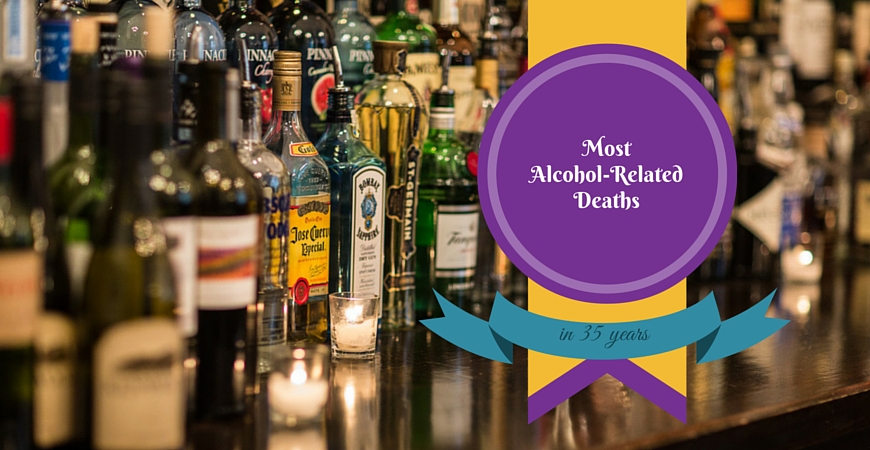The National Council on Alcoholism and Drug Dependence article cited multiple studies and reports, showing that 2014 was the highest rate of alcohol deaths in the last 35 years. On top of that, the problem could really be 3 times bigger than the statistics are sharing.
Here’s what NCADD’s article had to say:
According to the Centers for Disease Control and Prevention (CDC), there were 30,000 American deaths from alcohol-induced causes in 2014.
The CDC report notes that the deaths included alcohol poisoning and cirrhosis, liver damage primarily caused by drinking.
In an article published by Medical Daily, that information translates to 9.6 deaths from alcohol-induced causes per 100,000 people, a figure that has risen 37 percent since 2002. These alarming numbers don’t even include deaths from drunk driving, and other accidents or homicides committed under the influence of alcohol.
According to Philip J. Cook, a Duke University professor who studies alcohol consumption patterns, when you factor in deaths directly or indirectly caused by alcohol would cause the number of annual deaths to rise to around 90,000. Per-capita alcohol consumption has been rising nationally since the late 1990s.
The number of Americans who drink at least once per month rose by a small but significant amount between 2002 and 2014, from 54.9 percent to 56.9 percent, according to data from the Substance Abuse and Mental Health Services Administration. This change occurred most significantly in women—the percentage of women drinking at least monthly rose from 47.9 to 51.9 during the years examined. The women also reported higher rates of binge drinking, which is defined as five or more drinks on one occasion.
Somewhat predictably, the heaviest drinkers are at greatest risk for alcohol-induced causes of mortality. Prior research by Cook demonstrated that the top 10 percent of American adults consume the majority of alcohol in the country — an astonishing 74 drinks per week on average. For those who drink less, the line between moderate and dangerous can be a thin one. Research has shown one to two drinks a day is associated with health benefits and a decreased risk of mortality, but just a little more can have the opposite effect.
Patterns of alcohol use and deaths vary widely from state to state, for reasons that are sometimes unknown. Also, alcohol-related deaths and drug-related deaths often follow very different patterns, contrary to what one might think.
For example, the rate of alcohol-related deaths in New Jersey was the third-lowest in the U.S. last year, and the rate in Pennsylvania was sixth-lowest. The same set of federal data, however, shows that Pennsylvania had the sixth-highest rate of drug overdose deaths 921.4 per 100,000 (and continuing to rise), while New Jersey’s drug-death rate was down in 2014, just below the national average.
Drug fatality rates tend to be higher in the suburban counties of both states, while alcohol death rates are lower. In cities, the relationship is reversed.
In recent years, public health experts have targeted deaths from prescription painkillers, which have risen significantly since the early 2000s. No such public health effort was mounted in response to alcohol deaths, despite the fact that in 2014 more people died from alcohol-induced causes (30,722) than from overdoses of prescription painkillers and heroin combined (28,647).
Though alcohol has been integrated into society as an acceptable substance, research such as this throws our choices into question. Why do we so readily welcome alcohol into our lives, but shun other drugs? Especially when some of them have been shown to be less toxic?
Some researchers hope public health officials will focus their efforts more on the dangers posed by alcohol in the future, rather than on the dangers of less toxic drugs, such as marijuana and LSD.

